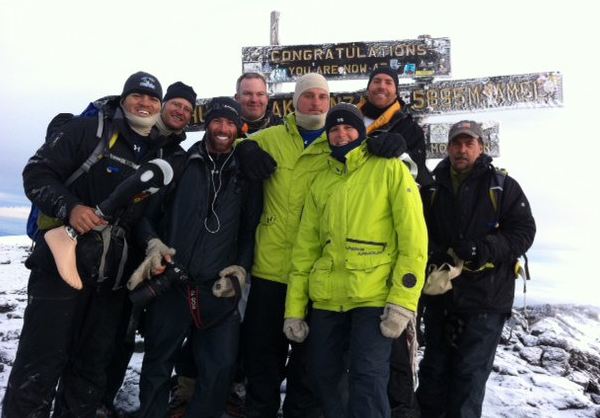Kilimanjaro is actually not a mountain, but a three-peak volcano located in the northeast of the Republic of Tanzania, right near the border with Kenya. Easily recognizable by its silhouette and snow that cover its peak, it is the highest peak in Africa and authentic natural beauty.
3 peaks of Kilimanjaro
The volcanic complex we know as Gunung Kilimanjaro consists of three heights: Kibo, Shira, and Mawenzi; The latter is considered the third highest peak on the African continent, after Mount Kenya.
The highest part of Mawenzi is Hans Meyer Point. On the other hand, Kibo is an active volcano and currently emits small fumaroles.
Shira is the oldest crater of the three that forms Kilimanjaro. It has a height of 3,962 meters and is known as the most outdated crater of the three, with a relatively flat plateau in the north and east, attacked by materials from Kibo.
For geologists and surveyors, Kilimanjaro is a real study gem, because Kilimanjaro presents a very interesting structure. For example, at the top of Kibo, there is a volcanic caldera, that is, a large depression, which includes a crater called ‘Reusch’ with a diameter of 900 meters.
On the southern edge of Kilimanjaro, you can see the peak of Uhuru, one of the most amazing points of Kibo and all of it. And on the southwestern side of the peak, there is a western opening that occurred 100,000 years ago and is called Western Breach.
A part of World Heritage Sites
Since 1987, Kilimanjaro is part of a list of places that are World Heritage Sites, with which it is a forest reserve. Hunting is not permitted within its limits and, at present, everything that is possible is done to protect flora and fauna, including endangered species.
With regard to fauna, areas that are less elevated are those that offer more species. There you can find various species of monkeys, leopards, antelope, buffalo or elephants, various types of birds, among other animals. In other words, Climbing Mount Kilimanjaro includes an introduction to various endemic species of East Africa
Mount Kilimanjaro
In Kilimanjaro National Park, you can find everything from glaciers, eternal snow areas and alpine grasslands to tropical forests, deserts and, of course, savannas in their skirts. However, it is known that glaciers, for years, have decreased due to global warming. Because of its proximity to the Indian Ocean and the size of a large garden, you can admire all types of ecosystems. Kilimanjaro acts as a natural barrier to monsoons that sweep East Africa from March to August.
Rain is very important on the southern slopes, because it provides the moisture needed for the life of flora and fauna. Then, on the higher side, where there is a higher concentration of snow and ice, rare flora and fauna.
Climbing to Kilimanjaro
It is surprising that this natural wonder was unknown until the 19th century. It was German missionary Johannes Rebmann, together with Ludwing Krapf, who discovered the mass in 1848. However, his first story about the beauty of this place was hardly taken into account. Little by little, more missionaries and explorers came to the area that strengthened what Rebmann had shown and the first attempts to reach the African peak began to occur.
The first person to reach the top of Kilimanjaro was Hans Meyer from Germany, on October 6, 1889, who made an adventure with chagga guides Yohana Lauwo and Ludwig Purtscheller from Austria. Since then, thousands of people have accepted the challenge of climbing the highest peak of Kilimanjaro. The routes have been made on all sides and the best known are the Marangu route and the Machame route.
The peak can be reached without great knowledge or climbing material, in part with the creation of this route and also with the retreat of glaciers that have made the increase easier than the last century. All you have to take into account is that you need permission from the Tanzanian authorities to climb this mountain.
Add The Sports Daily to your Google News Feed!







